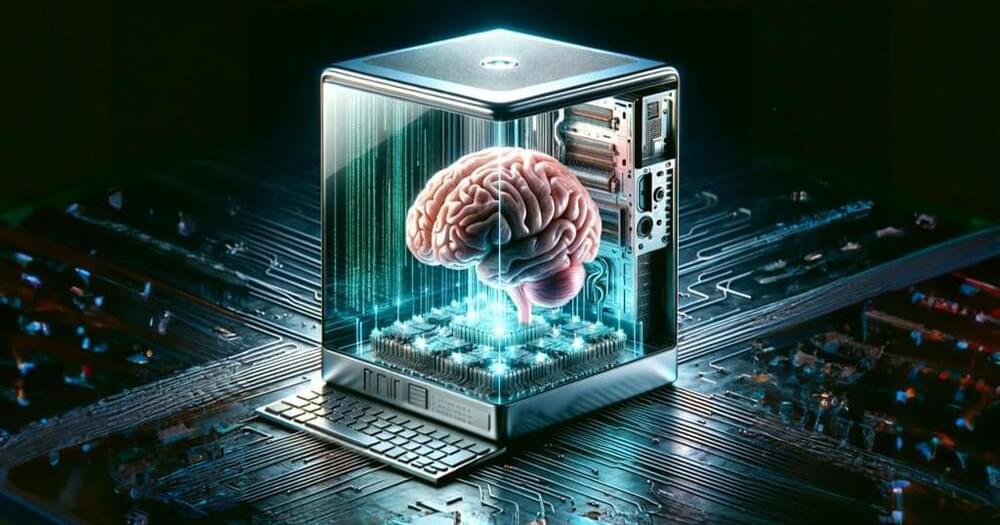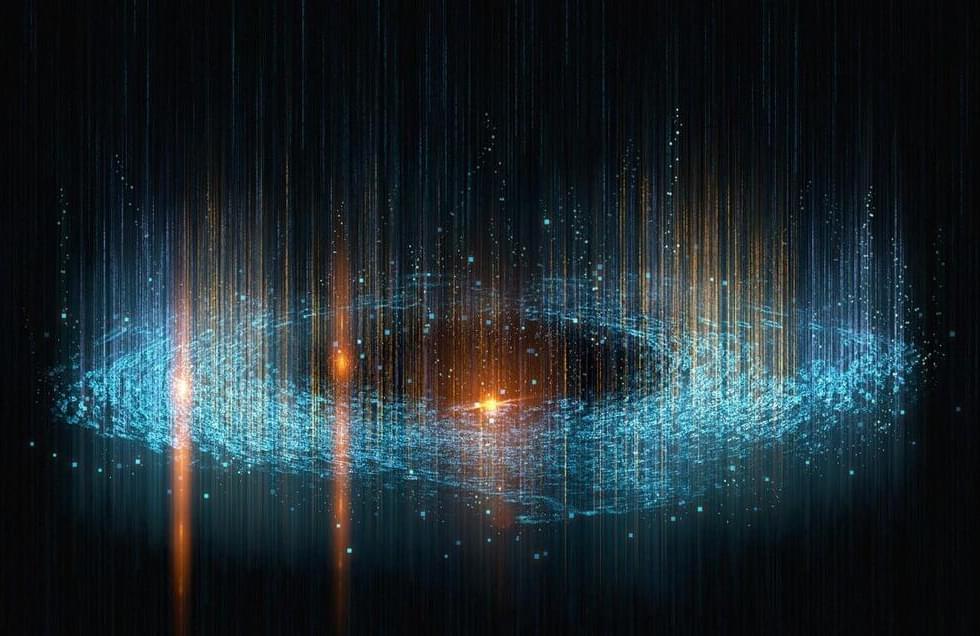Mar 31, 2024
Will ‘digital resurrections’ let us bring back the dead?
Posted by Dan Breeden in categories: robotics/AI, virtual reality
In the not-too-distant future, chatbots and VR could let us interact with lost friends and relatives.
In the not-too-distant future, chatbots and VR could let us interact with lost friends and relatives.

Neuromorphic chips could reduce energy bills for AI developers as well as emit useful cybersecurity signals in the future of computing.
Artificial Intelligence — yada, yada, yada.
Sometimes the only way to learn how to swim is to be tossed into the deep end. And that is exactly what I have decided to do.
Herewith a very short elementary course. ChatGPT, OpenAI etc. are all based on LLM — large language models. They scraped a couple billion words and images and then using a magic Cuisinart, they mixed and matched until their platform software was able to know what you thought you were thinking before you thought it, or in the alternative gave you information in an elegant format that you could give to your professor while assuring him that you wrote or painted it yourself. Or not.
Join the world’s biggest AI newsletter with 600,000+ readers from companies like Apple, Amazon, Google, Meta, Microsoft and more.
Process, and store data, most of which is handled by the rapidly expanding cloud. A stable, secure, real-time system may allow for interfacing the cloud with the human brain. One promising strategy for enabling such a system, denoted here as a “human brain/cloud interface” (“B/CI”), would be based on technologies referred to here as “neuralnanorobotics.” Future neuralnanorobotics technologies are anticipated to facilitate accurate diagnoses and eventual cures for the ∼400 conditions that affect the human brain. Neuralnanorobotics may also enable a B/CI with controlled connectivity between neural activity and external data storage and processing, via the direct monitoring of the brain’s ∼86 × 109 neurons and ∼2 × 1014 synapses. Subsequent to navigating the human vasculature, three species of neuralnanorobots (endoneurobots, gliabots, and synaptobots) could traverse the blood–brain barrier (BBB), enter the brain parenchyma, ingress into individual human brain cells, and autoposition themselves at the axon initial segments of neurons (endoneurobots), within glial cells (gliabots), and in intimate proximity to synapses (synaptobots). They would then wirelessly transmit up to ∼6 × 1016 bits per second of synaptically processed and encoded human–brain electrical information via auxiliary nanorobotic fiber optics (30 cm3) with the capacity to handle up to 1018 bits/sec and provide rapid data transfer to a cloud based supercomputer for real-time brain-state monitoring and data extraction. A neuralnanorobotically enabled human B/CI might serve as a personalized conduit, allowing persons to obtain direct, instantaneous access to virtually any facet of cumulative human knowledge. Other anticipated applications include myriad opportunities to improve education, intelligence, entertainment, traveling, and other interactive experiences. A specialized application might be the capacity to engage in fully immersive experiential/sensory experiences, including what is referred to here as “transparent shadowing” (TS). Through TS, individuals might experience episodic segments of the lives of other willing participants (locally or remote) to, hopefully, encourage and inspire improved understanding and tolerance among all members of the human family.
“We’ll have nanobots that… connect our neocortex to a synthetic neocortex in the cloud… Our thinking will be a… biological and non-biological hybrid.”
— Ray Kurzweil, TED 2014
According to Altman, AI will require vast amounts of energy to operate, and nuclear fusion would be the best bet for its source.
“Microsoft has demonstrated its ability to build pioneering AI infrastructure used to train and deploy the world’s leading AI models,” a Microsoft spokesperson told the site. “We are always planning for the next generation of infrastructure innovations needed to continue pushing the frontier of AI capability.”
Needless to say, that’s a mammoth investment. As such, it shines an even brighter spotlight on a looming question for the still-nascent AI industry: how’s the whole thing going to pay for itself?
So far, most companies in the space — Microsoft and OpenAI included — have offered significant AI services for free, sometimes with a more advanced upsell version like OpenAI’s ChatGPT Plus.

Gauging whether or not we dwell inside someone else’s computer may come down to advanced AI research—or measurements at the frontiers of cosmology.
Unlike me, Kurzweil has been embracing AI for decades. In his 2005 book, The Singularity Is Near: When Humans Transcend Biology, Kurzweil made the bold prediction that AI would expand human intelligence exponentially, changing life as we know it. He wasn’t wrong. Now in his 70s, Kurzweil is upping the ante in his newest book, The Singularity Is Nearer: When We Merge with AI, revisiting his prediction of the melding of human and machine, with 20 additional years of data showing the exponential rate of technological advancement. It’s a fascinating look at the future and the hope for a better world.
Kurzweil has long been recognized as a great thinker. The son of a musician father and visual artist mother, he grew up in New York City and at a young age became enamored with computers, writing his first computer program at the age of 15.
While at MIT, earning a degree in computer science and literature, Kurzweil started a company that created a computer program to match high school students with colleges. In the ensuing years, he went on to found (and sell) multiple technology-fueled companies and inventions, including the first reading machine for the blind and the first music synthesizer capable of re-creating the grand piano and other orchestral instruments (inspired by meeting Stevie Wonder). He has authored 11 books.
